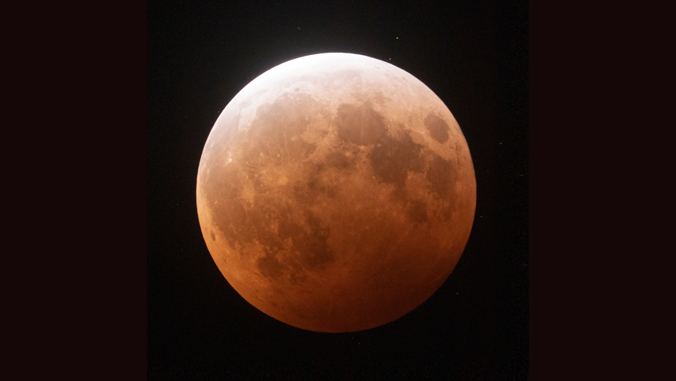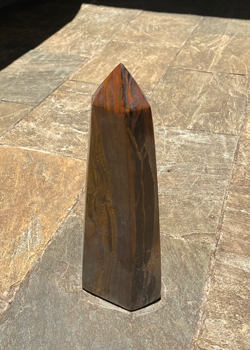
In ancient Hawaiʻi, daily life relied heavily upon ke ala o ka mahina (the Moon calendar). Kānaka ʻŌiwi (Native Hawaiians) turned to the Moon to determine when to gather certain foods, plant crops, and for spiritual guidance and worship. Around the world, the Moon’s mystique and beauty still mesmerizes us today.
On May 26, Hawaiʻi enjoyed prime viewing of a total lunar eclipse—when the Earth comes between the Sun and the full Moon. The University of Hawaiʻi Institute for Astronomy (IfA) hosted a livestream of the celestial wonder, which drew more than a thousand viewers from around the world, including Hawaiʻi and the continental U.S.
IfA associate astronomer Roy Gal provided step-by-step narration of the cosmic display for the livestream. “I was stunned,” he exclaimed. “We had people from Australia, Philippines, New Zealand, Hong Kong, India, London, New York, Texas and California. It was a great opportunity to showcase our state, UH, and how we are reaching out worldwide.”
Gal and IfA Hilo Education Specialist Carolyn Kaichi helped organize the virtual viewing event. UH Mānoa alumnus Alex Dzierba set up his telescope and hi-definition equipment to capture footage of the eclipse for the livestream. Dzierba, a registered nurse, developed a knack for photographing celestial events, which have been featured on television news broadcasts. He has helped IfA with outreach events since 2012.
- Related UH News story: Eclipse data illuminate mysteries of Sun’s corona, June 5, 2020
Lahaina Noon shines on state

Less than 12 hours after the lunar eclipse, Oʻahu experienced another astronomical event, Lahaina Noon. The annual solar phenomenon occurs when the Sun is directly overhead and all shadows disappear. Twice a year, in May and July, the Sun passes directly overhead for locations in the tropics, like Hawaiʻi.
Any upright object such as a flagpole, fire hydrant or lamppost will have no shadow. The event’s Hawaiian language term originated in 1990, when Bishop Museum held a contest to give a name to the phenomenon. The word lahaina translated into English can mean “cruel sun.”
“These events remind people that the universe is full of things that evoke wonder and amazement—and it also gives us a chance to explain what’s happening,” Gal said. “We can show how humanity understands so much—we can predict eclipses to very high precision, we can explain why the eclipsed moon looks red—and yet we have so much to learn and discover.”
A partial lunar eclipse will be visible on November 19, 2021. Gazers in North and South America, Australia and parts of Europe and Asian can catch the next total lunar eclipse on May 16, 2022.

